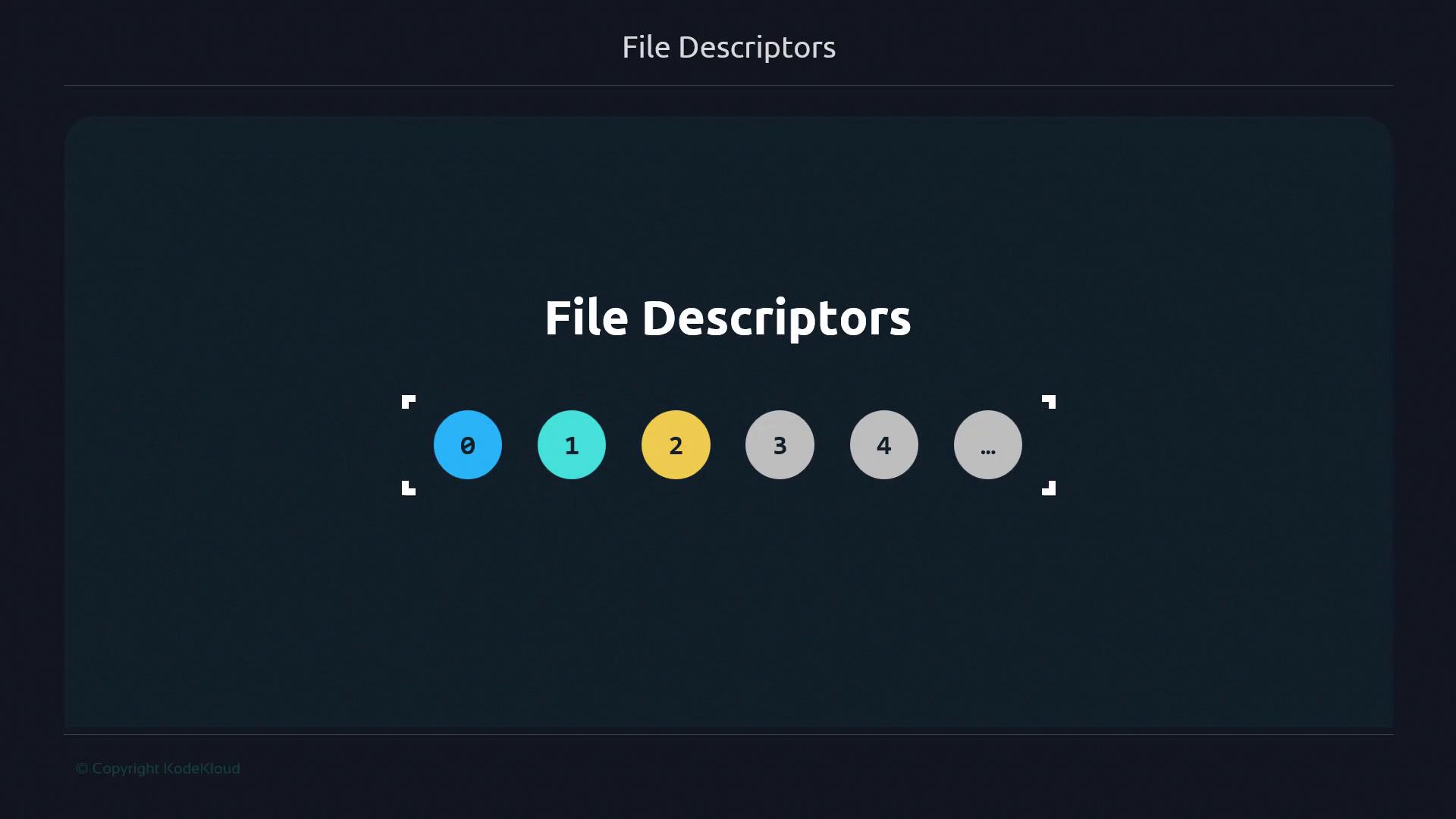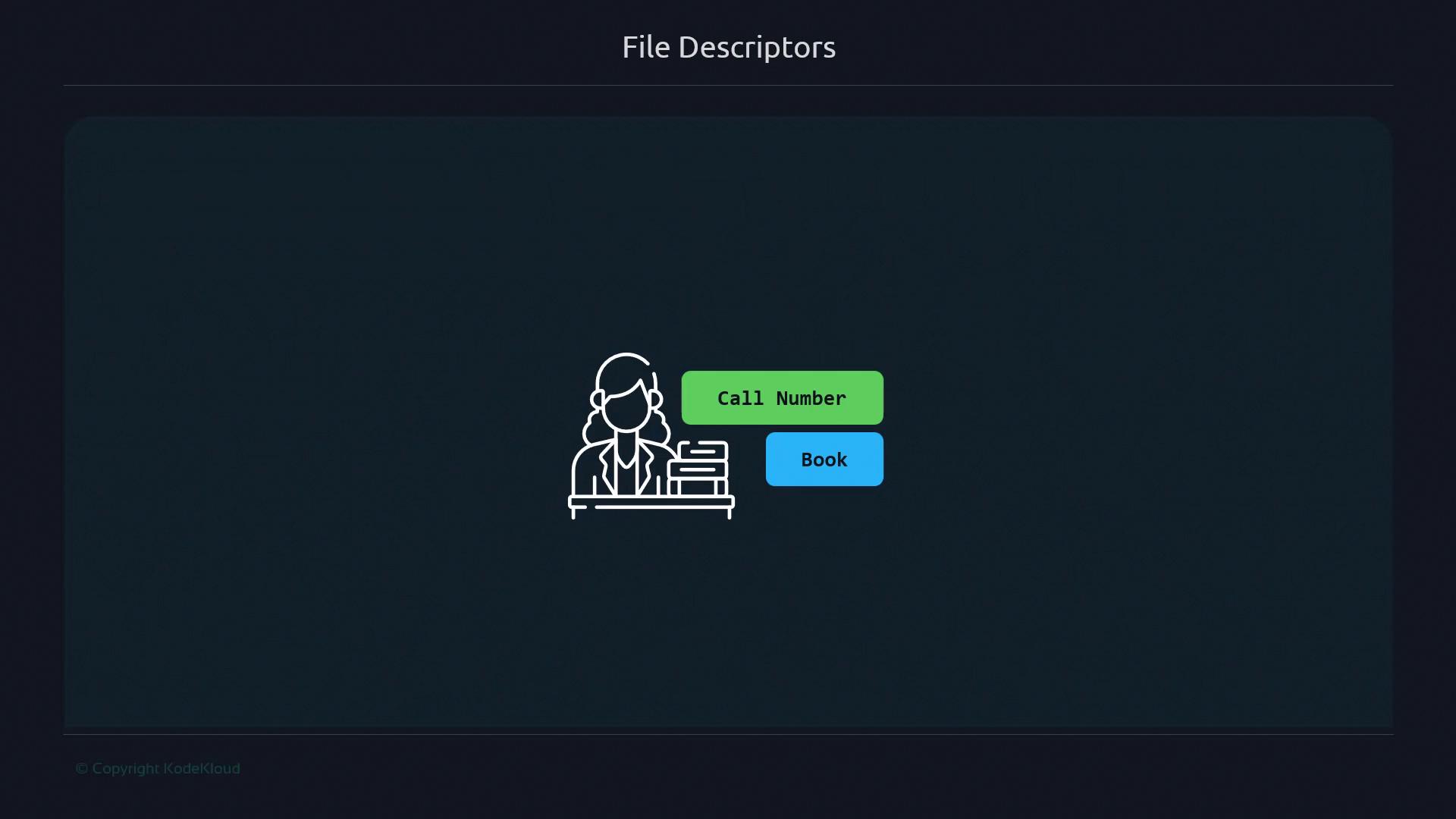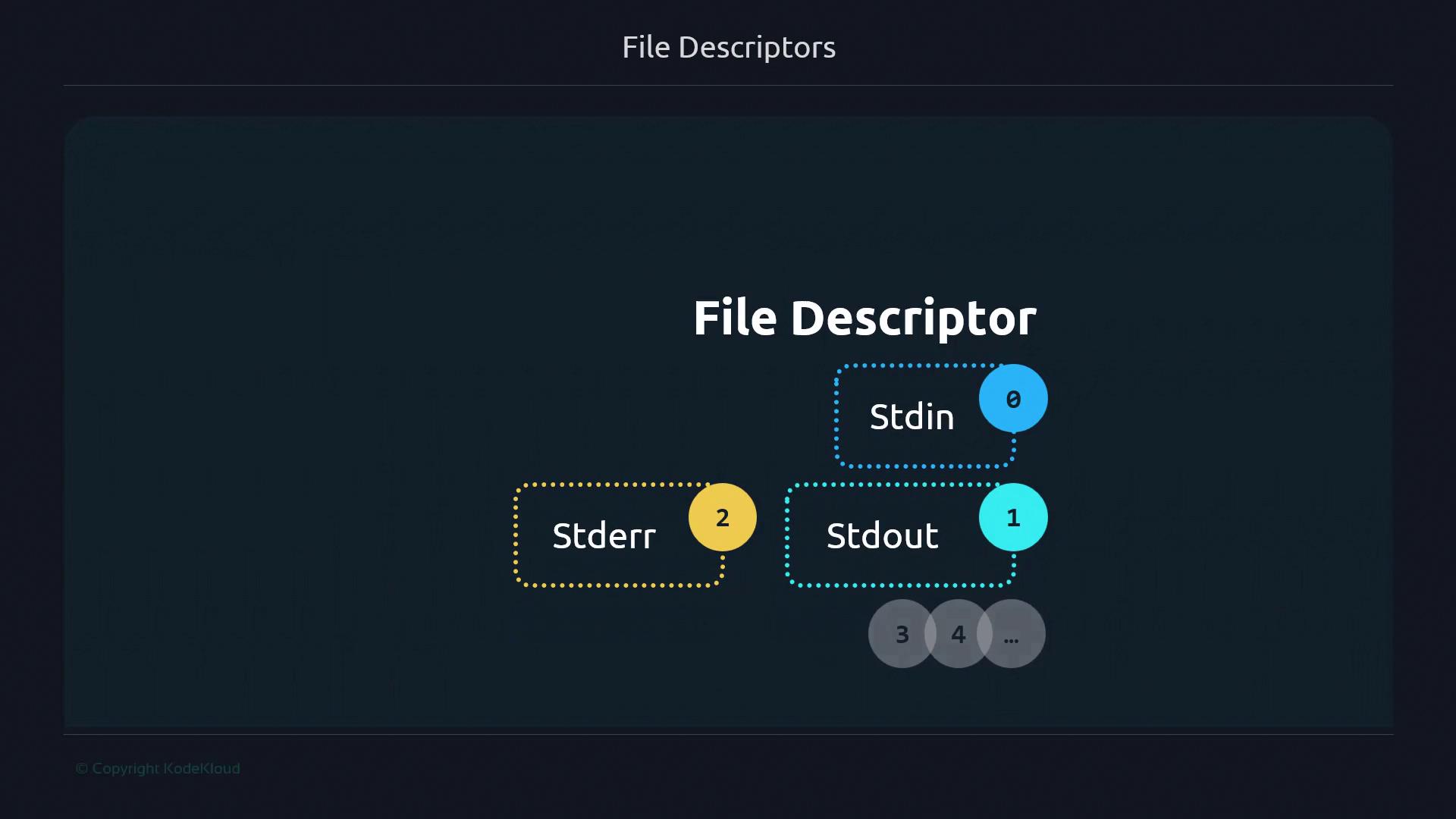Advanced Bash Scripting
Streams
File descriptors
On the command line, the numbers 1 and 2 refer to standard output and standard error—these are examples of file descriptors. In this guide, you will learn:
- Additional file descriptor numbers beyond 0, 1, and 2
- The precise definition of a file descriptor
- Why the term “file” descriptor applies to streams like pipes and sockets
A file descriptor is a nonnegative integer that indexes an open I/O resource in the operating system, such as a disk file, network socket, or pipe. Although the name originates from early Unix file-handling, modern OSes treat sockets, pipes, and devices the same way.
Reserved Standard Streams
By convention on Linux and most Unix-like systems, three file descriptors are preallocated for the main I/O streams:
| Descriptor Number | Stream | Description |
|---|---|---|
| 0 | stdin | Standard input |
| 1 | stdout | Standard output |
| 2 | stderr | Standard error |
Any descriptor ≥ 3 can reference additional resources: open files, sockets, pipes, or terminal devices.

Note
File descriptors are assigned per process. When a program opens a new file, the OS returns the smallest unused descriptor number (starting at 3).
Real-World Analogy: Librarian and Call Numbers
Imagine a library where:
- The librarian is your operating system
- Books are files, sockets, or pipes
- Call numbers on the books are file descriptors
When you hand a call number (descriptor) to the librarian, they fetch the corresponding book (I/O resource). This models how your shell uses descriptors to route input/output.

Standard Streams Mapped to Descriptors
Applying the library analogy to standard streams:
- stdin (0): Asking the librarian which book you want
- stdout (1): Receiving the book from the librarian
- stderr (2): Getting an error message if the book is unavailable
Just as a library holds many books, a running process can have dozens or even thousands of open descriptors (3, 4, 5, …).

Further Reading and References
Watch Video
Watch video content